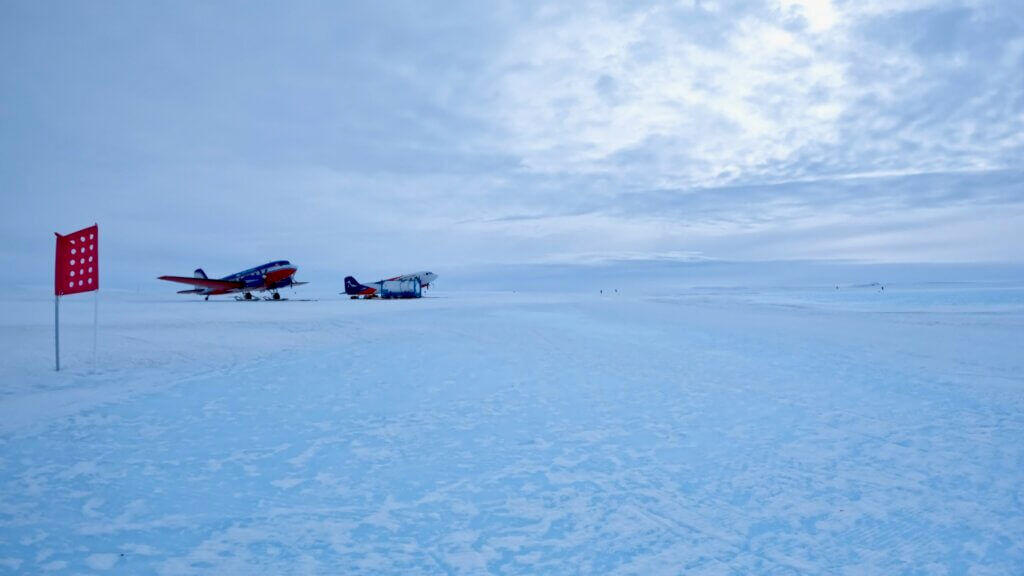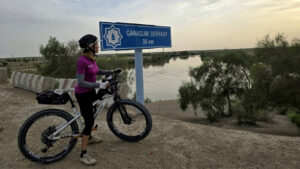Blog 3
8th February | Day 1 | Distance – 35km
Much was done behind the scenes to reassure the authorities that we were prepared and we had a responsible approach to safety and protecting the environment. When Luke (Operations Manager) checked emails the next morning, the response was positive – the expedition was on.
The support team consisted of two very experienced Russians, Oleg (Runway manager) and Sergei (a senior engineer). As White Desert is busy closing its camps for the winter, it conveniently happened that the Arctic Truck support vehicle needed to be delivered to Whichaway to be parked there for the season. Supporting a bespoke expedition like mine isn’t White Desert’s core business, but some lateral thinking from Luke and the WD team lead to the expedition becoming a reality, fitting in with minimal disruption to resources and the closing down schedule.
In a direct line, it is only 132km from Wolf’s Fang Camp to Whichaway Camp, but the landscape is heavily crevassed. Oleg was involved in creating the 200km route to avoid the danger zones. It firstly ascends towards the southeast, up to 1680m before gradually descending to Novo Runway (Russian blue ice runway) at about 500m and then there’s a steep descent to Schirmacher Oasis.

Once we had packed, and repacked everything, I was excited to start cycling at around 9.45am, heading towards the Basler aircraft ski-way and then out across an extensive ice field. The ice was incredibly slippery, frozen into random ripples. The carbide studs on my tyres were ineffective on this surface. Even Sergei found himself slipping over. After landing very heavily a couple of times, I started pushing, but the soles of my cycle boots are more like cleated planks of wood and walking was a slow and treacherous affair. After walking about 3km I remembered I was carrying a set of lite crampons that I slipped over my boots. That made all the difference. I could walk without fear of slipping, pushing my bike for about another 5 km. As patches of snow phased in, I pedalled with the crampons still on (unable to clip in) and walked the ice patches. My heavy falls on the ice had really dashed my confidence on icy surfaces – I was pretty nervous every time I encountered more ice.
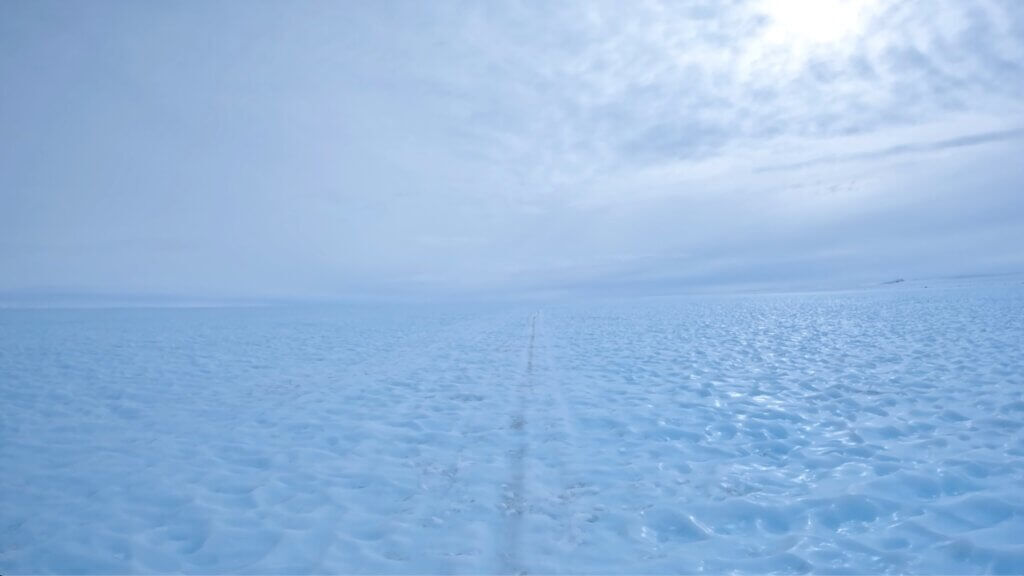
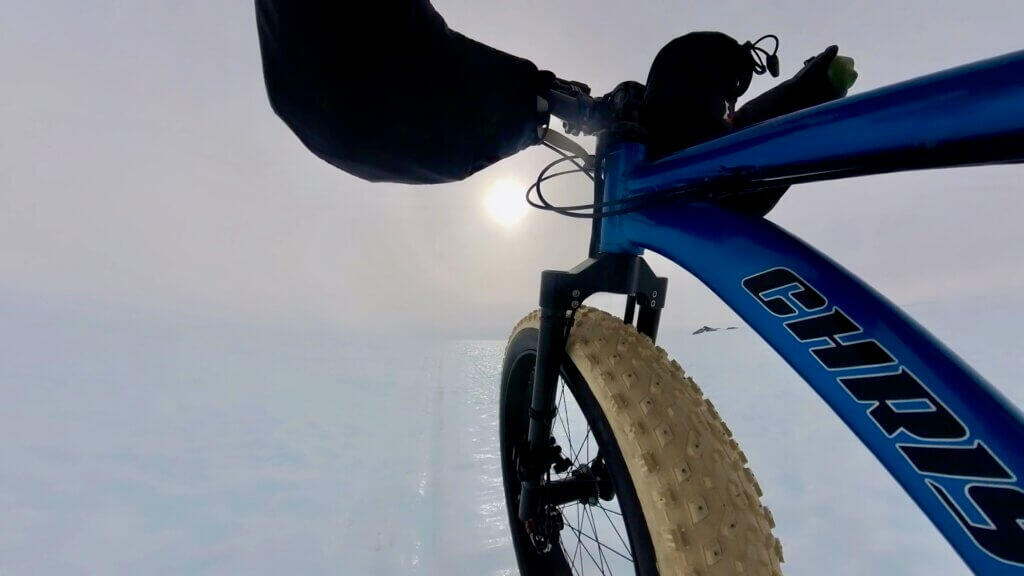
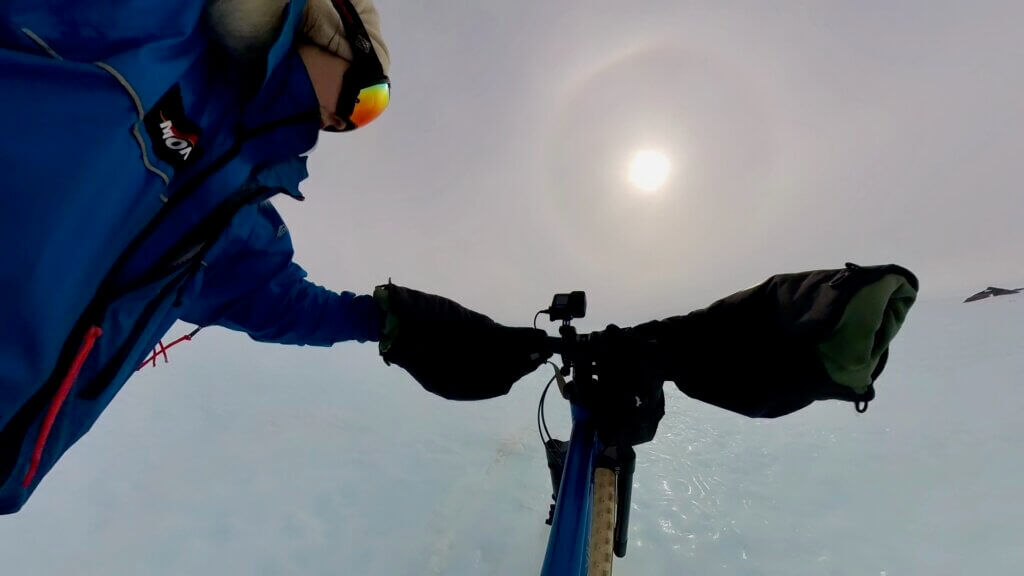
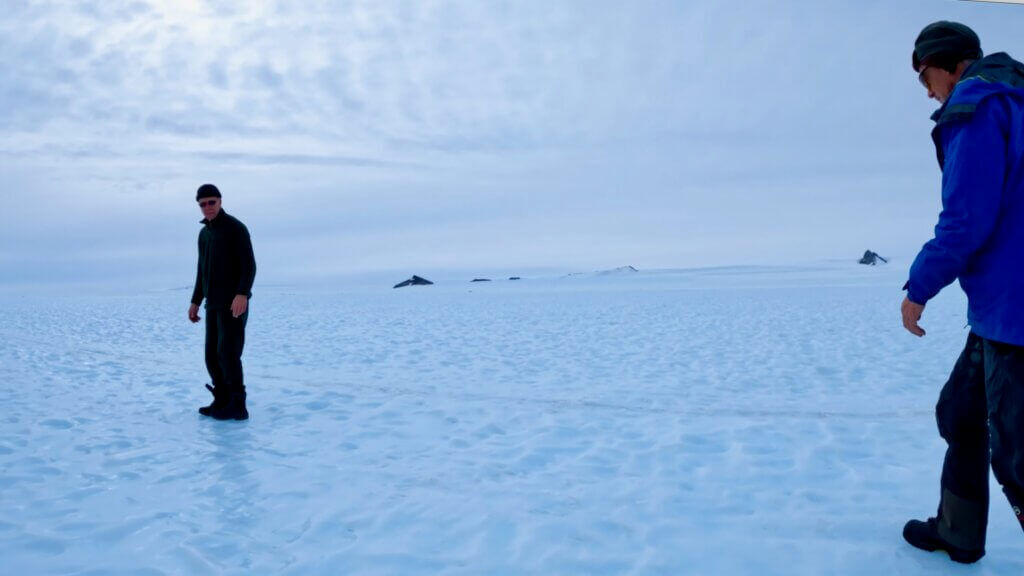
I then gradually ascended away from the icy plain and after 21km reached the next obstacle, the notorious crevasse field and the principal section of concern. For 1.2km, Oleg and I walked, roped to the vehicle, attached to our bodies with climbing harnesses. Oleg tested each snow-filled crack with a pole to make sure it wasn’t about to give way. The route is marked with bamboo poles but the ice is constantly moving and we stepped with a high degree of caution, me pushing the bike.

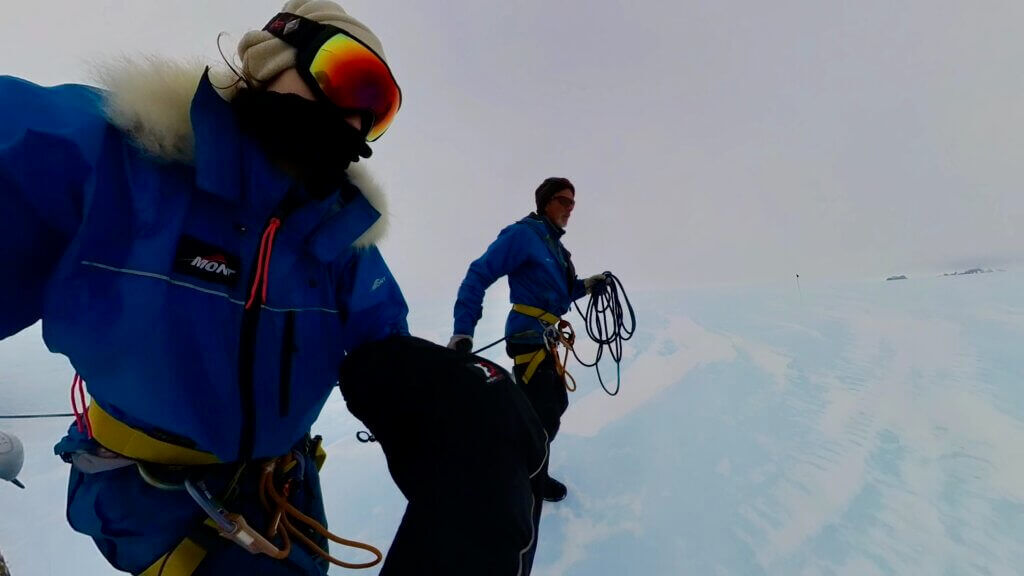
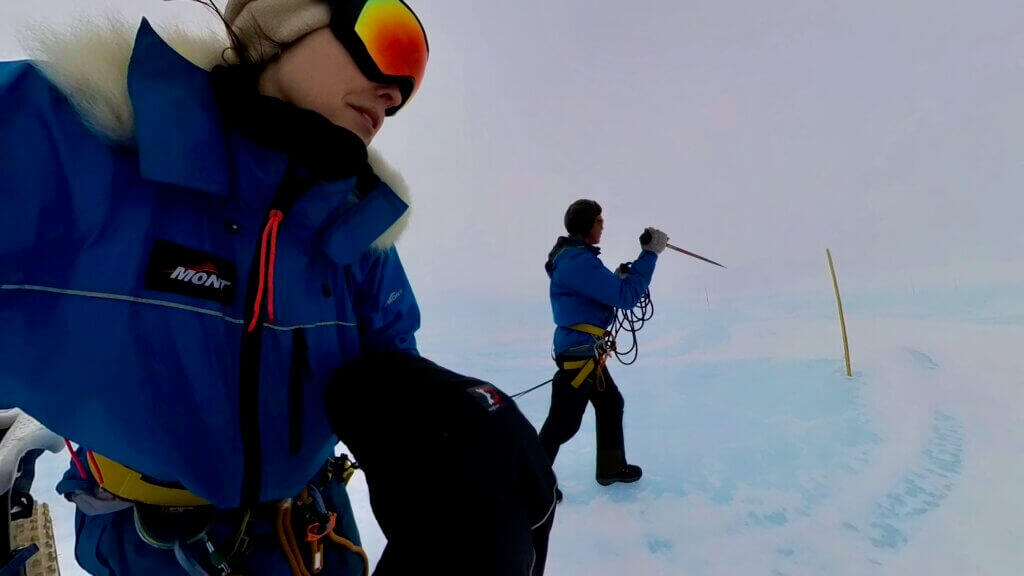
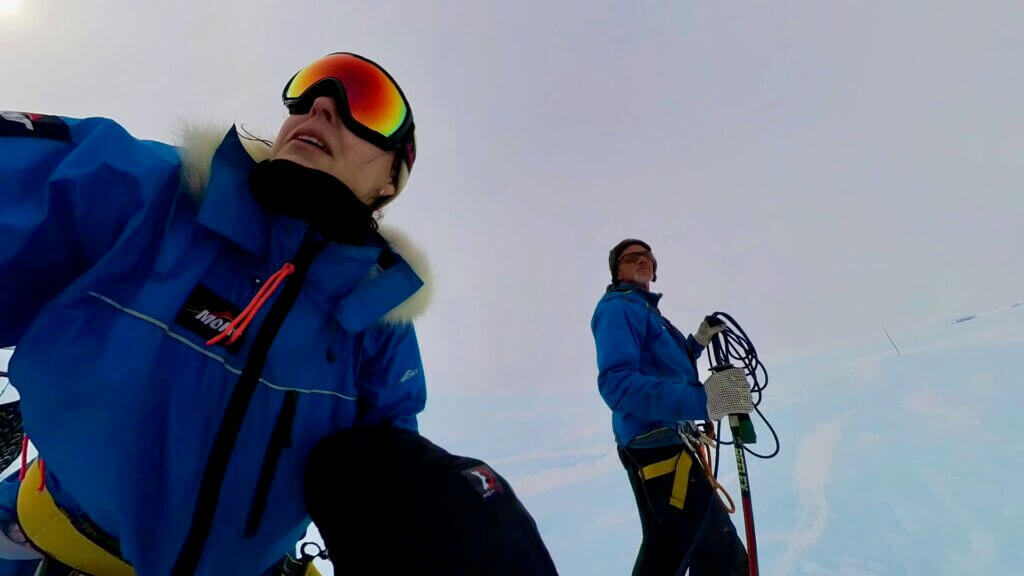

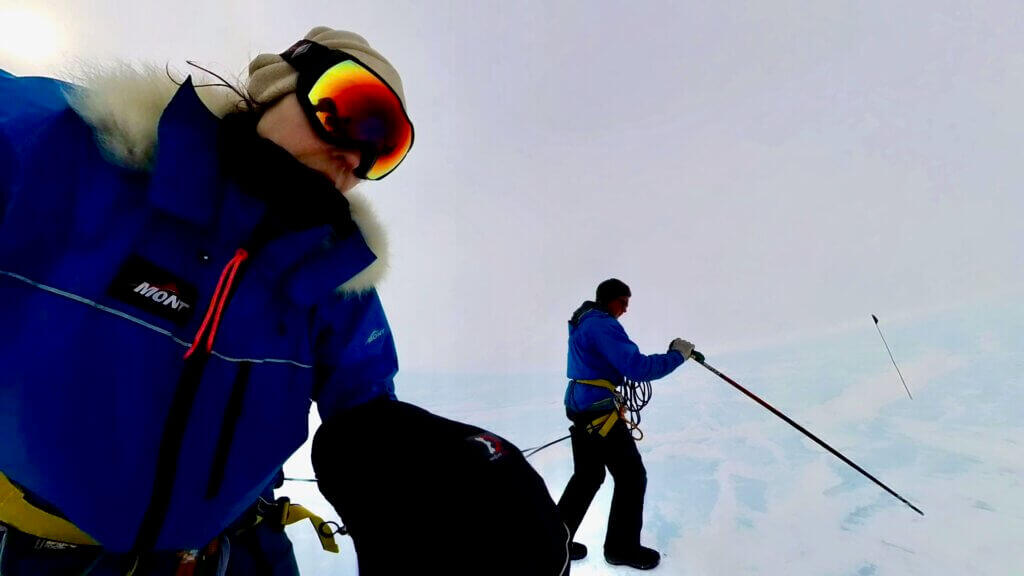
Safely navigating through the crevasse field, I was finally able to remove my crampons, but the second half of the day became a real struggle – uphill, into the wind and, most challenging of all, was the very poor visibility. There was virtually no contrast between snow and sky – no shadows to differentiate between the constantly changing surfaces. It was very difficult to maintain balance and I would burn a lot of energy just trying to stay upright. I cycled virtually all of the afternoon, though I struggled to reach 6km/hr. I fell off a few more times (on to soft surfaces) and decided that 35km was enough for the day.
Setting up camp, we discovered that they had not packed my sleeping bag and, in the end, Sergei loaned me his (not warm) while he slept in the car. It was a very cold night for me.
Check out the animated Day 1 route by clicking on the arrow at the bottom of the page…

